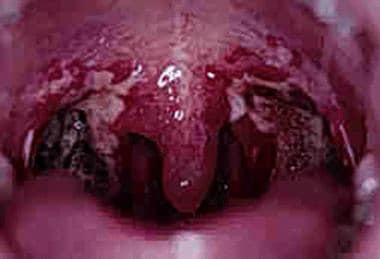Background
Tonsillectomy is defined as the surgical excision of the palatine tonsils. Although a long-practiced procedure, tonsillectomy is still a common operation and considered one of the most common major surgical procedure performed in children. This procedure is still surrounded by controversy, especially regarding indications for surgery and details of surgical technique.
Epidemiology
Frequency
Although tonsillectomy is performed less often than it once was, it is still among the most common surgical procedures performed in children in the United States. More than 530,000 tonsillectomies are performed in children and adolescents in the United States every year because of recurrent throat infections or sleep-disordered breathing.
In the UK, few children with evidence-based indications undergo tonsillectomy and seven in eight of those who do (32,500 of 37,000 annually) are unlikely to benefit. [1]
Pathophysiology
The tonsils are 3 masses of tissue: the lingual tonsil, the pharyngeal (adenoid) tonsil, and the palatine or fascial tonsil. The tonsils are lymphoid tissue covered by respiratory epithelium, which is invaginated and which causes crypts.
In addition to producing lymphocytes, the tonsils are active in the synthesis of immunoglobulins. Because they are the first lymphoid aggregates in the aerodigestive tract, the tonsils are thought to play a role in immunity. Although healthy tonsils offer immune protection, diseased tonsils are less effective at serving their immune functions. Diseased tonsils are associated with decreased antigen transport, decreased antibody production above baseline levels, and chronic bacterial infection.
Indications
Otolaryngology textbooks list a variety of indications for tonsillectomy. The American Academy of Otolaryngology–Head and Neck Surgery (AAO-HNS) publishes clinical indicators for surgical procedures. Paraphrased, these clinical indicators are as follows:
Absolute indications
See the list below:
-
Enlarged tonsils that cause upper airway obstruction, severe dysphagia, sleep disorders, or cardiopulmonary complications
-
Peritonsillar abscess that is unresponsive to medical management and drainage documented by surgeon, unless surgery is performed during acute stage
-
Tonsillitis resulting in febrile convulsions
-
Tonsils requiring biopsy to define tissue pathology
Relative indications
See the list below:
-
Three or more tonsil infections per year despite adequate medical therapy
-
Persistent foul taste or breath due to chronic tonsillitis that is not responsive to medical therapy
-
Chronic or recurrent tonsillitis in a streptococcal carrier not responding to beta-lactamase-resistant antibiotics
-
Unilateral tonsil hypertrophy that is presumed to be neoplastic
Relevant Anatomy
Tonsils are located laterally in the oropharynx. The tonsils are bordered by the following tissues:
-
Deep - Superior constrictor muscle
-
Anterior - Palatoglossus muscle
-
Posterior - Palatopharyngeus muscle
-
Superior - Soft palate
-
Inferior - Lingual tonsil
Blood supply is through the external carotid artery and its branches, as follows:
-
Superior pole
Ascending pharyngeal artery (tonsillar branches)
Lesser palatine artery
-
Inferior pole
Facial artery branches
Dorsal lingual artery
Ascending palatine artery
Venous outflow is handled by the plexus around the tonsillar capsule, the lingual vein, and the pharyngeal plexus. Lymphatic drainage involves the superior deep cervical nodes and the jugulodigastric nodes. Sensory supply is provided by the glossopharyngeal nerve and the lesser palatine nerve. Important structures deep to the inferior pole include the glossopharyngeal nerve, the lingual artery, and the internal carotid artery. The tonsil surface is filled with crypts lined with squamous epithelium. Lymphoid cells underlie the epithelium. See Tonsil and Adenoid Anatomy for more information.
Contraindications
Contraindications for tonsillectomy include the following:
-
Bleeding diathesis
-
Poor anesthetic risk or uncontrolled medical illness
-
Anemia
-
Acute infection
-
Typical appearance on the morning after tonsillectomy, which was performed by using a blunt dissection method.
-
Tonsillectomy performed with the cautery technique. A Colorado needle-tip bovie is used to dissect the tonsil from its underlying muscular bed.
-
A suction bovie is used to achieve hemostasis. Ideally, the least amount of cautery necessary for hemostasis is used. Staying in the proper dissection plane limits the amount of bleeding, and possibly postoperative pain.









